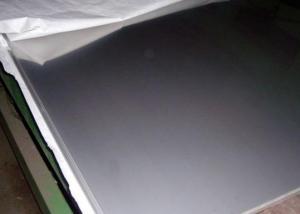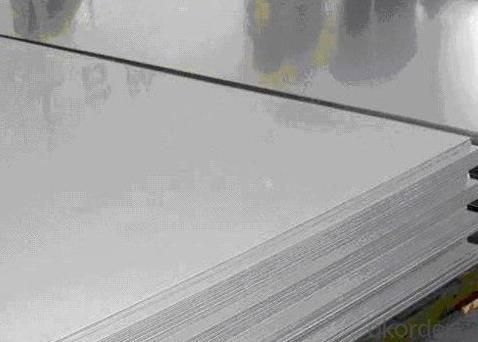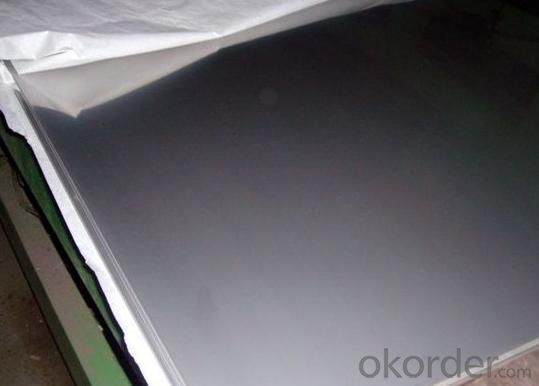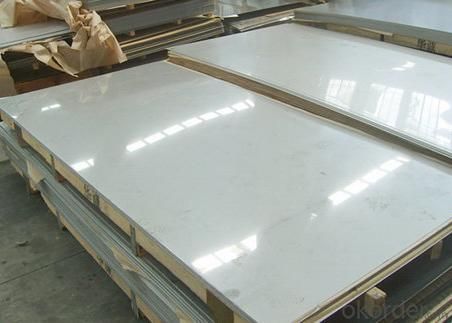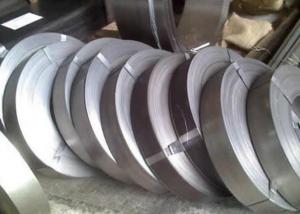316L Stainless Steel Sheet
- Loading Port:
- China Main Port
- Payment Terms:
- TT or LC
- Min Order Qty:
- 1 Ton m.t.
- Supply Capability:
- 1000 Tons Per Month m.t./month
OKorder Service Pledge
OKorder Financial Service
You Might Also Like
316L Stainless steel sheet
1. Chemical composition of 316L Stainless steel sheet
C | Si | Mn | P | S | Ni | Cr |
Max0.03 | max1.00 | max2.00 | max0.045 | max0.03 | 10.00-14.00 | 16.00-18.00 |
2. Mechanical properties of 316L Stainless steel sheet
Yield Strength | Tensile | Elongation | Hardness (HV) | Hardness (HRB) |
≥175 | ≥480 | ≥40 | ≤200 | ≤90 |
3. Standard of 316L Stainless steel sheet : AISI, ASTM, GB, EN, DIN, JIS
4. Surface of 316L Stainless steel sheet : 2B, NO.1, BA, NO.4, Hairline, SB, Mirror finish, Anti-skid, Cherkered etc.
5. Size of 316L Stainless steel sheet :
Thickness: 0.3-3mm (cold rolled), 3-40mm (hot rolled)
Width: 1000mm or 1219mm or 1240mm for cold rolled, 1500mm for hot rolled.
Length: As customers' request.
6. MOQ of 316L Stainless steel sheet : 1 Ton
7. Payment terms of 316L Stainless steel sheet : T/T or L/C
8. Packing of 316L Stainless steel sheet : Seaworthy package with wooden or Iron pallets with the paper and the steel strip,
or as customers' request.
9. Delivery time of 316L Stainless steel sheet : Usually about 7 days after we confirming the order, or according to your quantity
If you have any question or demand, pls feel free to contact me.
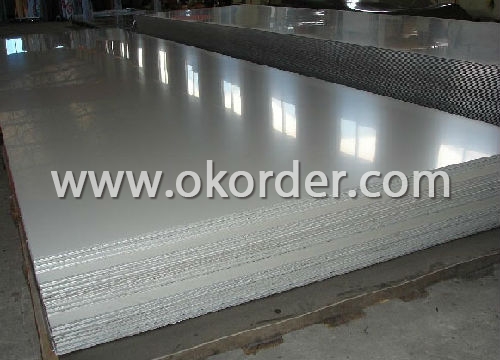
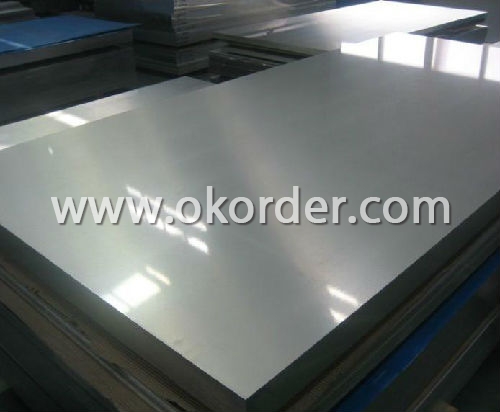
- Q: Are stainless steel strips suitable for welding with other materials?
- Stainless steel strips possess the capability to be welded with other materials, rendering them suitable for such purposes. Renowned for its remarkable corrosion resistance and formidable strength, stainless steel is widely favored across diverse applications. In welding, stainless steel strips can be effectively joined with materials like carbon steel, aluminum, and nickel alloys. However, it is crucial to meticulously consider the disparities in properties and composition between the materials being united in order to adhere to appropriate welding procedures. Furthermore, the selection of welding technique and filler material may differ based on the specific application and desired outcomes. In summary, stainless steel strips can be successfully welded with other materials, but it is of utmost importance to seek advice from welding professionals or consult welding guidelines to guarantee a robust and dependable bond.
- Q: What is the magnetic permeability of stainless steel strips?
- The magnetic permeability of stainless steel strips is typically low, making them less susceptible to magnetism compared to other materials.
- Q: Are stainless steel strips available in different colors?
- No, stainless steel strips are not available in different colors. Stainless steel is a type of metal alloy that is known for its resistance to corrosion and its durability. It is typically found in its natural silver color, which is a result of its composition. However, stainless steel can be coated or painted in different colors if desired. This process is often done for decorative purposes, but it may affect the stainless steel's corrosion resistance and durability.
- Q: What are the mechanical properties of 111 stainless steel strips?
- The mechanical properties of 111 stainless steel strips typically include high strength, good corrosion resistance, and excellent formability.
- Q: Are stainless steel strips suitable for architectural applications?
- Yes, stainless steel strips are suitable for architectural applications. They are highly durable, corrosion-resistant, and have an aesthetically pleasing appearance, making them ideal for various architectural purposes such as cladding, decorative elements, and structural components.
- Q: What are the common uses of stainless steel strips in the textile industry?
- Stainless steel strips are widely used in the textile industry for various purposes due to their exceptional properties and characteristics. One common use of stainless steel strips in this industry is as reinforcement in textile belts and conveyor systems. These strips help to enhance the strength and durability of the belts, allowing them to withstand heavy loads and continuous operation without any deformation. Another common use of stainless steel strips is in the production of textile machinery components. These strips are used to manufacture various parts such as guide rails, needle plates, and cutting blades. Stainless steel's corrosion resistance and high temperature resistance make it ideal for these applications, ensuring a long lifespan and reliable performance of the machinery. Stainless steel strips are also utilized in the production of textile molds and dies. These molds are used for processes like fabric embossing or printing, where stainless steel strips provide excellent heat transfer and stability. The high tensile strength of stainless steel ensures that the molds can withstand the pressure and stress exerted during the manufacturing process. Moreover, stainless steel strips find application in textile weaving and knitting machines. They are used as wire guides, tensioning devices, and reed hooks, providing smooth and accurate movement of yarns during the weaving or knitting process. The corrosion resistance of stainless steel ensures that the strips do not degrade over time, maintaining their functionality and reliability. In addition, stainless steel strips are employed in textile dyeing and finishing processes. These strips are used as clips or pins to secure the fabric in place during dyeing or finishing, ensuring that it does not unravel or get distorted. Stainless steel's resistance to chemicals and high temperatures makes it suitable for these applications, as it can withstand the harsh conditions of the dyeing and finishing processes. Overall, stainless steel strips play a crucial role in the textile industry, providing strength, durability, and reliability in various applications. Their corrosion resistance, high temperature resistance, and excellent mechanical properties make them a preferred material for reinforcing belts, manufacturing machinery components, producing molds, and facilitating various processes in the textile manufacturing sector.
- Q: Can 111 stainless steel strips be coated with anti-corrosion paints?
- Yes, 111 stainless steel strips can be coated with anti-corrosion paints. Stainless steel is known for its corrosion resistance, but in certain environments or applications, additional protection may be required. Anti-corrosion paints are designed to provide an extra layer of protection against corrosion by creating a barrier between the steel surface and the surrounding environment. These paints can help prevent rusting, staining, and other forms of corrosion on stainless steel. It is important to ensure that the chosen paint is compatible with stainless steel and follows proper application procedures to achieve optimal results.
- Q: What are the common product forms in which 111 stainless steel strips are available?
- Various product forms of 111 stainless steel strips are readily available to meet different applications and needs. These include coils, sheets, slit strips, precision strips, flat bars, and foils. Coils are commonly used in automotive, construction, and appliances industries. They offer convenience to manufacturers as they can be easily shaped and sized. Sheets are used in architectural applications, kitchen equipment, and for decorative purposes. They can be easily cut, bent, and formed according to specific requirements. Slit strips are narrow and long, and commonly used in applications such as gaskets, seals, and electrical components. They come in various thicknesses and widths to suit specific needs. Precision strips are manufactured with tight tolerances and high surface quality. They are used in critical applications where precise dimensions and superior surface finish are required, such as in the medical and aerospace industries. Flat bars, which provide strength and stability, are widely used in structural applications, support frames, and machine components. They offer a larger surface area for load distribution. Foil-form stainless steel strips are thin and flexible, commonly used in packaging, electronic components, and heat exchangers. They provide excellent corrosion resistance and can be easily molded into complex shapes. It is important to consider that the availability of these product forms may vary depending on the manufacturer and specific industry requirements.
- Q: Can stainless steel strips be used in automotive industries?
- Stainless steel strips have the ability to be utilized within the automotive sector. The properties of stainless steel, including its impressive resistance to corrosion, high strength, and durability, establish it as an appropriate material for a variety of applications in the automotive industry. Automotive components, such as exhaust systems, trim, body panels, brackets, and reinforcements, are frequently manufactured using stainless steel strips. These strips possess the capability to withstand the harsh conditions commonly found in automotive environments due to their resistance to heat, chemicals, and wear. In addition, the ease with which stainless steel strips can be shaped, welded, and fabricated allows for flexibility in design and efficient production. As a result, stainless steel strips have become a dependable and widely preferred choice in the automotive industry.
- Q: Can stainless steel strips be used in medical applications?
- Yes, stainless steel strips can be used in medical applications. Stainless steel is a commonly used material in the medical field due to its excellent corrosion resistance, high strength, and ease of sterilization. Stainless steel strips are often used for various medical devices and equipment, such as surgical tools, implants, dental instruments, and medical tubing. The material's resistance to corrosion and ability to withstand high temperatures make it ideal for applications where cleanliness and sterility are crucial. Additionally, stainless steel is biocompatible, meaning it does not cause any adverse reactions when in contact with living tissue. Overall, stainless steel strips are a suitable choice for medical applications due to their durability, reliability, and compatibility with the human body.
Send your message to us
316L Stainless Steel Sheet
- Loading Port:
- China Main Port
- Payment Terms:
- TT or LC
- Min Order Qty:
- 1 Ton m.t.
- Supply Capability:
- 1000 Tons Per Month m.t./month
OKorder Service Pledge
OKorder Financial Service
Similar products
Hot products
Hot Searches
Related keywords
